Brand:
TOB NEW ENERGYitem no.:
TOB-CS350Morder(moq):
1setPayment:
L/C,T/Tproduct origin:
Chinashipping port:
XIAMENSingle Channel Electrochemical Workstation
SPECIFICATIONS
This TOB-CS350M single-channel potentiostat /galvanostat / electrochemical workstation consists of DDS arbitrary function generator, high power potentiostat/galvanostat, dual-channel correlation analyzer, dual-channel high-speed 16bit/high-precision 24bit AD converter and extension interfaces. Max. current is ±2A, potential range is ±10V. EIS frequency range is 10uHz~1MHz. It can be used for various electrochemical fields such as corrosion, energy, material and electroanalysis. The current can be boosted up to 20A/40A with a current booster CS2020B/ CS2040B.
|
Specifications |
|
|
Support 2-, 3- or 4-electrode system |
Potential and current range: Automatic |
|
Potential control range: ±10V |
Current control range: ±2A |
|
Potential control accuracy: 0.1%×full range±1mV |
Current control accuracy: 0.1%×full range |
|
Potential resolution: 10μV (>100Hz),3μV (<10Hz) |
Current sensitivity:1pA |
|
Rise time: <1μs (<10mA), <10μs (<2A) |
Reference electrode input impedance:1012Ω||20pF |
|
Current range: 2nA~2A, 10 ranges |
Compliance voltage: ±21V |
|
Maximum current output: 2A |
CV and LSV scan rate: 0.001mV~10,000V/s |
|
CA and CC pulse width: 0.0001~65,000s |
Current increment during scan: 1mA@1A/ms |
|
Potential increment during scan: 0.076mV@1V/ms |
SWV frequency: 0.001~100 kHz |
|
DPV and NPV pulse width: 0.0001~1000s |
AD data acquisition:16bit@1 MHz,20bit@1 kHz |
|
DA Resolution:16bit, setup time:1μs |
Minimum potential increment in CV: 0.075mV |
|
IMP frequency: 10μHz~1MHz |
Low-pass filters: covering 8-decade |
|
Operating System: Windows 10/11 |
Interface: USB 2.0 |
|
Weight / Measurements: 6.5kg, 36.5 x 30.5 x16 cm |
|
|
EIS (Electrochemical Impedance Spectroscopy) |
|
|
Signal generator |
|
|
Frequency range:10μHz~1MHz |
AC amplitude:1mV~2500mV |
|
DC Bias: -10~+10V |
Output impedance: 50Ω |
|
Waveform: sine wave, triangular wave and square wave |
Wave distortion: <1% |
|
Scanning mode: logarithmic/linear, increase/decrease |
|
|
Signal analyzer |
|
|
Integral time: minimum:10ms or the longest time of a cycle |
Maximum:106 cycles or 105s |
|
Measurement delay: 0~105s |
|
|
DC offset compensation |
|
|
Potential automatic compensation range: -10V~+10V |
Current compensation range: -1A~+1A |
|
Bandwidth: 8-decade frequency range, automatic and manual setting |
|
Techniques- models comparison
|
Techniques |
TOB-CS300M NO EIS |
TOB-CS310M WITH EIS |
TOB-CS350M WITH EIS |
|
|
Stable polarization |
Open Circuit Potential (OCP) |
√ |
√ |
√ |
|
Potentiostatic (i-t curve) |
√ |
√ |
√ |
|
|
Galvanostatic |
√ |
√ |
√ |
|
|
Potentiodynamic(Tafel plot) |
√ |
√ |
√ |
|
|
Galvanodynamic |
√ |
√ |
√ |
|
|
Transient polarization |
Multi-Potential Steps |
√ |
√ |
√ |
|
Multi-Current Steps |
√ |
√ |
√ |
|
|
Potential Stair-Step (VSTEP) |
√ |
√ |
√ |
|
|
Galvanic Stair-Step (ISTEP) |
√ |
√ |
√ |
|
|
Chrono methods |
Chronopotentiometry (CP) |
√ |
√ |
√ |
|
Chronoamperometry (CA) |
√ |
√ |
√ |
|
|
Chronocoulometry (CC) |
√ |
√ |
√ |
|
|
Voltammetry |
Cyclic Voltammetry (CV) |
√ |
√ |
√ |
|
Linear Sweep Voltammetry (LSV)(i-v) |
√ |
√ |
√ |
|
|
Staircase Voltammetry (SCV) # |
√ |
|
√ |
|
|
Square wave voltammetry (SWV) # |
√ |
|
√ |
|
|
Differential Pulse Voltammetry (DPV)# |
√ |
|
√ |
|
|
Normal Pulse Voltammetry (NPV)# |
√ |
|
√ |
|
|
Differential Normal Pulse Voltammetry (DNPV)# |
√ |
|
√ |
|
|
AC voltammetry (ACV) # |
√ |
|
√ |
|
|
EIS |
Potentiostatic EIS (Nyquist, Bode) |
|
√ |
√ |
|
Galvanostatic EIS |
|
√ |
√ |
|
|
Potentiostatic EIS (Optional freq.) |
|
√ |
√ |
|
|
Galvanostatic EIS(Optional freq.) |
|
√ |
√ |
|
|
Mott-Schottky |
|
√ |
√ |
|
|
Potentiostatic EIS vs. Time (Single freq.) |
|
√ |
√ |
|
|
Galvanostatic EIS vs. Time (Single freq.) |
|
√ |
√ |
|
|
Corrosion measurement |
Cyclic polarization curve (CPP) |
√ |
√ |
√ |
|
Linear polarization curve (LPR) |
√ |
√ |
√ |
|
|
Electrochemical Potentiokinetic Reactivation (EPR) |
√ |
√ |
√ |
|
|
Electrochemical Noise (EN) |
√ |
√ |
√ |
|
|
Zero resistance Ammeter (ZRA) |
√ |
√ |
√ |
|
|
Battery test |
Battery charge and discharge |
√ |
√ |
√ |
|
Galvanostatic charge and discharge (GCD) |
√ |
√ |
√ |
|
|
Potentiostatic Charging and Discharging(PCD) |
√ |
√ |
√ |
|
|
Potentiostatic Intermittent Titration Technique(PITT) |
√ |
√ |
√ |
|
|
Galvanostatic Intermittent Titration Technique(GITT) |
√ |
√ |
√ |
|
|
Amperometry |
Differential Pulse Amperometry (DPA) |
√ |
|
√ |
|
Double Differential Pulse Amperometry (DDPA) |
√ |
|
√ |
|
|
Triple Pulse Amperometry (TPA) |
√ |
|
√ |
|
|
Integrated Pulse Amperometric Detection (IPAD) |
√ |
|
√ |
|
# There are corresponding stripping methods.
Application
Corrosion: the tester includes all the electrochemical techniques for corrosion measurement such as OCP, polarization curve (potentiodynamic), EIS, Cyclic polarization CPP (passivation curve), Electrochemical Potentiokinetic Reactivation (EPR), Hydrogen diffusion test, ZRA, Electrochemical noise, etc. It can be used to study metal corrosion mechanism and corrosion resistance, and evaluate the coating durability and sacrificial anode current efficiency. It can also be used for rapid screening of corrosion inhibitors, fungicides, etc.
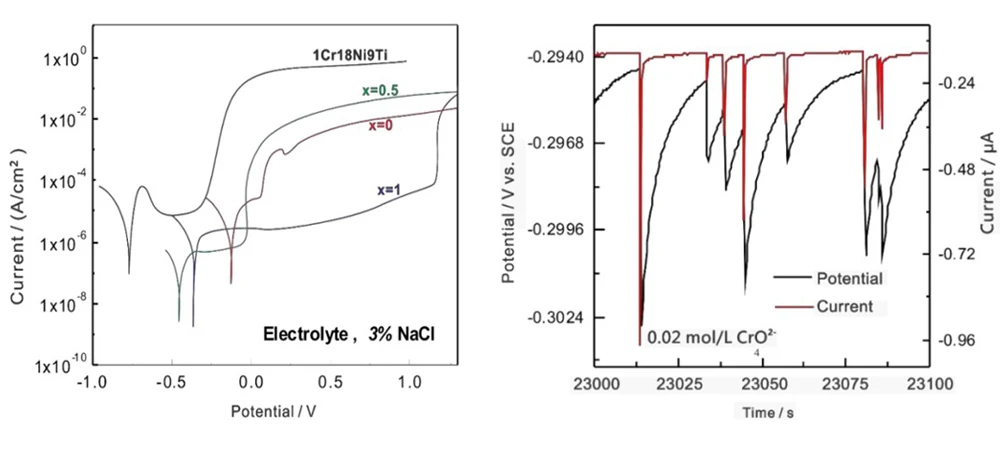
Left: Polarization curves of Ti-alloy& stainless steel in 3%NaCl solution
Right: EN of low-carbon steel in 0.05mol/LCl+0.1mol/LNaHCO3
It uses correlation integral algorithm and dual-channel over- sampling technique, and has strong anti-interference ability. The internal resistance of the instrument is up to 1013Ω. It's suitable for EIS measurements of high-impedance system (such as coating, concrete etc)
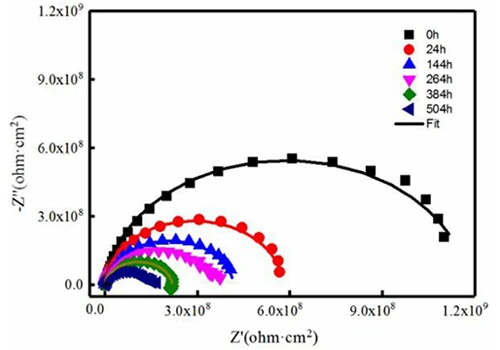
Salt spray aging test of high impedance coating
Energy
With techniques LSV, CV, galvanostatic charge and discharge (GCD), Constant potential/ current EIS, and precise IR compensation circuit, Corrtest potentiostats are widely used in supercapacitor, Li-ion batteries, sodium-ion batteries, fuel cell, Li-S batteries, solar cell, solid-state batteries, flow batteries, metal-air batteries etc. It is an excellent scientific tool for researchers in the fields of energy and materials.
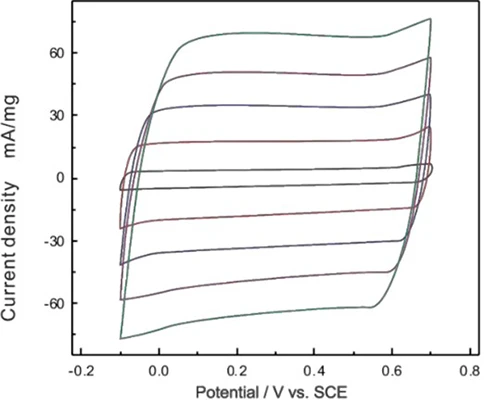
CV curve of PPy supercapacitor in 0.5 mol/L H2SO4 solution
Electroanalysis
Corrtest potentiostat includes all the voltammetric methods such as NPV, DNPV, SWV, ACV, and can be used for fast analysis of the trace elements in the solution. Voltammetry stripping methods can do the Quantitative analysis according to the stripping peak current.
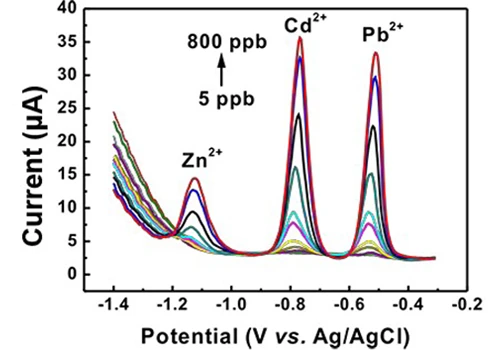
Stripping voltametric curves in solution of different Pb2+, Cd 2+,Zn2+ concentration
Electro-catalysis
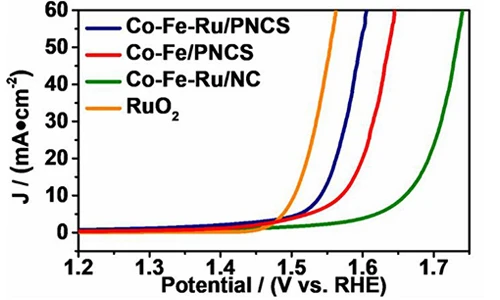
Software Features
Cyclic voltammetry: CS studio software provides users a versatile smoothing/differential/ integration kit, which can complete the calculation of peak height, peak area and peak potential of CV curves. In CV technique, during the data analysis, there is function of selecting exact cycle(s) to show.
Tafel plot and corrosion rate: CS studio also provides powerful non-linear fitting on Butler-Volmer equation of polarization curve. It can calculate Tafel slope, corrosion current density, limitation current, polarization resistance, corrosion rate. It can also calculate the power spectrum density, noise resistance and noise spectrum resistance based on the EN measurements.
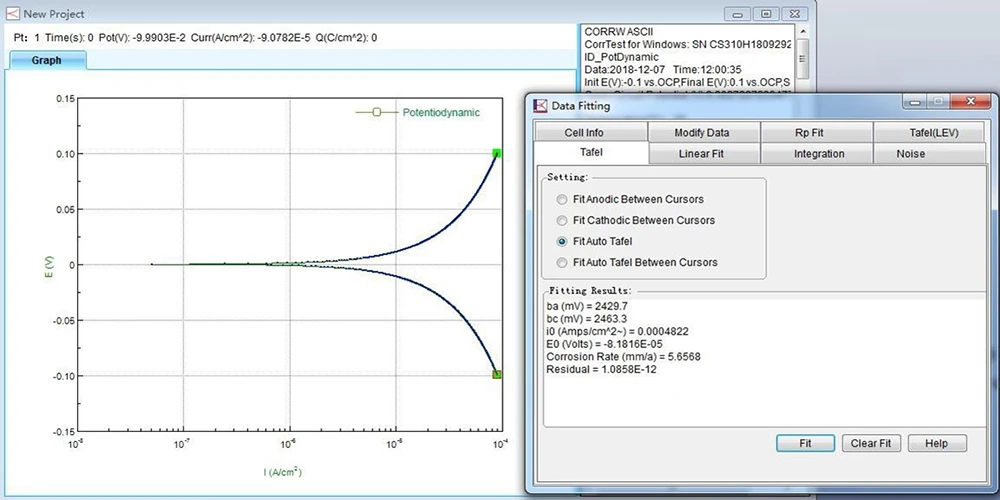
Battery Test and analysis:
charge & discharge efficiency, capacity, specific capacitance, charge & discharge energy.
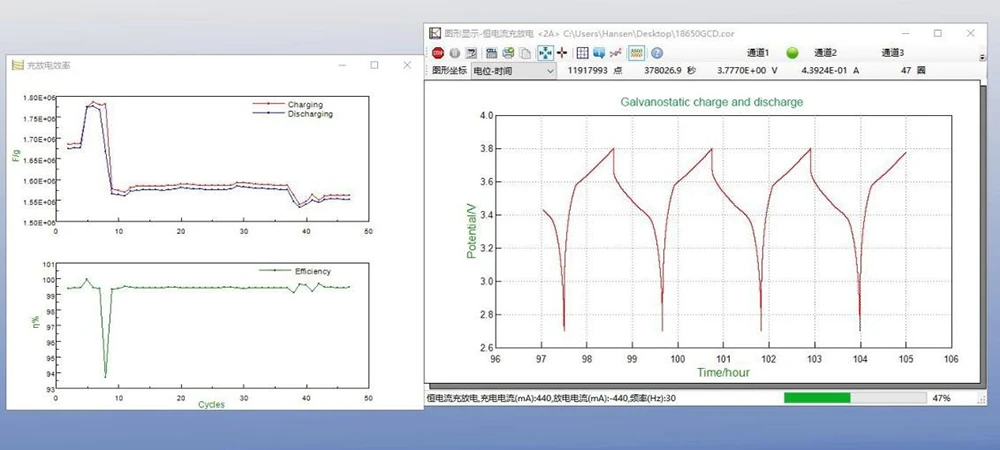
EIS analysis: Bode, Nyquist, Mott-Schottky plot
During EIS data analysis, there is built-in fitting function to draw the custom equivalent circuit.
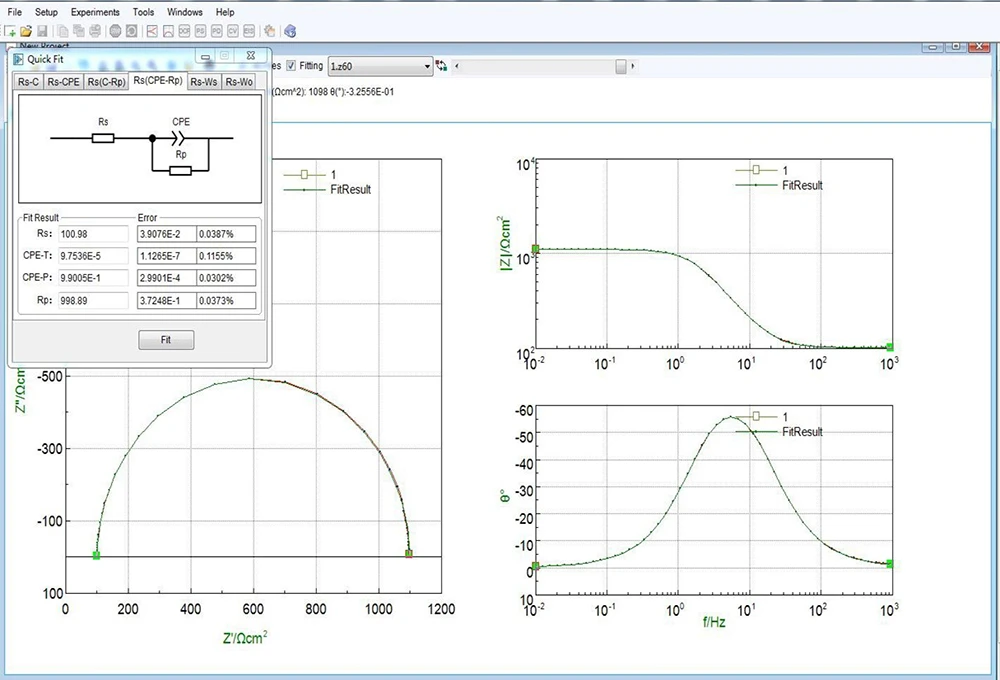
Standard supply-single-channel potentiostat
Product Display
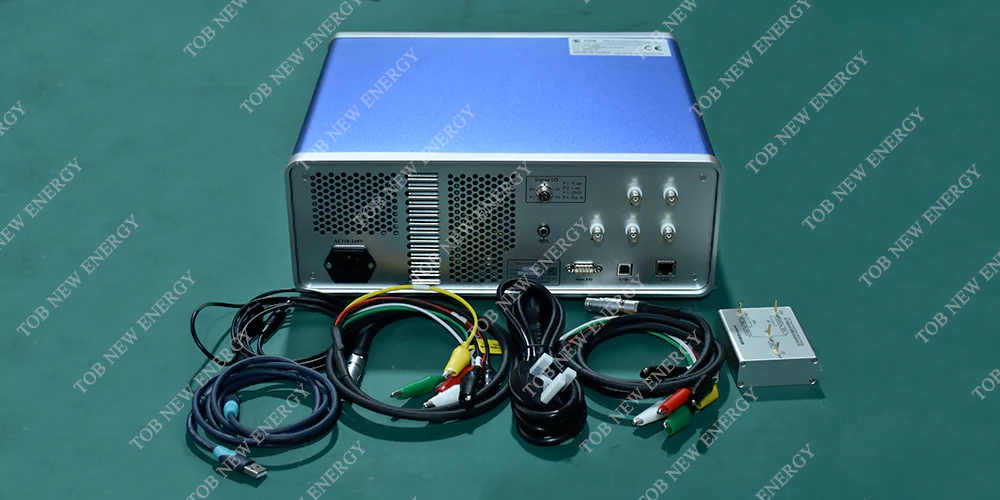
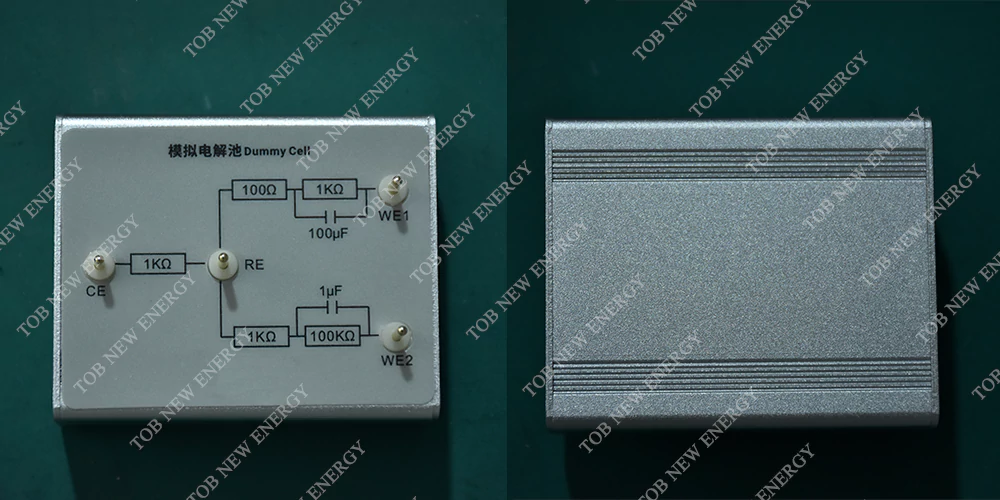
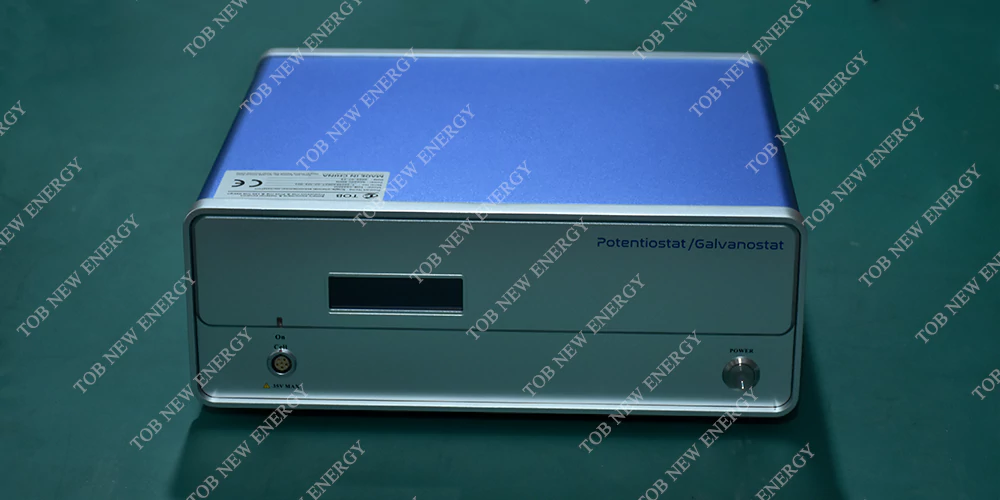
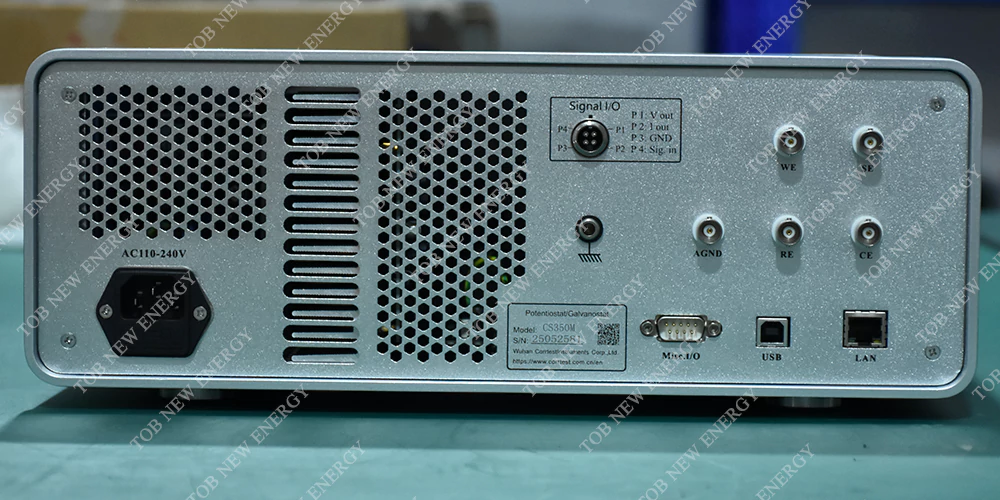
Email : tob.amy@tobmachine.com
Whatsapp/Phone number :+86 181 2071 5609
If you are interested in our products and want to know more details,please leave a message here,we will reply you as soon as we can.
